Mold Restoration
Any time the inside of your home is exposed to uncontrolled water, you are likely to have a mold problem. The extent of your mold issue will depend upon how much exposure your home has to water. Porous materials like drywall are more likely to absorb water and become impacted by mold. During mold restoration, our team removes mold-infected materials from your home to protect your family from the dangerous health outcomes of mold exposure.
In an emergency, call us for service ASAP
We are an IICRC (Institute of Inspection Cleaning and Restoration Certification) certified firm. That means each of our team members has gone through specific industry training to perform Water Restoration, Mold Restoration and Fire and Smoke Restoration services.
IICRC#226736
Mold Restoration Service Steps
Step 1
Inspect the Site
The first step of mold restoration is to inspect the problem. Our certified restoration specialist will come to your home and develop a plan.
Step 2
Contain the Mold
Then we work to contain the spread of mold so that the problem doesn't escalate.
Step 3
Remove Impacted Materials
We remove moldy materials safely so your contractors can quickly come in and repair or replace those materials when we're done.
24/7/365 Emergency Response
Need help immediately?
We’re here for you.
Frequently Asked Questions
Mold Restoration
-
Mold inside your home is hazardous and, in some cases, can be deadly. It is imperative that members of your household do not inhale mold spores into their lungs. Our team uses PPE every time we do a mold restoration project.
-
Yes. Drywall is the number one place mold will grow in your home. It's our job to remove all porous nonstructural materials (including doors, trim, cabinets, drywall, and floors) so that they can be replaced.
-
Yes. Mold can grow almost anywhere where it can find moisture and food. Mold reproduces by spreading spores through the air or water. Once mold has taken hold of your home, getting rid of it without eliminating the material it lives in is challenging.
-
Homeowners insurance will usually only cover mold removal if it's the result of a sudden or accidental covered peril.
Here are some examples of when mold removal might be covered: A pipe bursts and causes water damage, A washing machine malfunctions, A toilet overflows, and Firefighters put out a fire.
If mold has been present for weeks or longer, it's unlikely to be covered.
-
No, you should not spray bleach on black mold.
Bleach can actually contribute to mold growth on porous surfaces. Bleach only wipes up surface mold spores, so it can't kill mold that's seeped into materials. This can increase the amount of moisture available, which allows mold to thrive.
-
Most molds are not harmful, in fact, some cheese,wine, and soy sauces use mold. This is why we recommend anyone that sees mold in their home to get an indoor air quality test done to see if it is harmful or safe.



